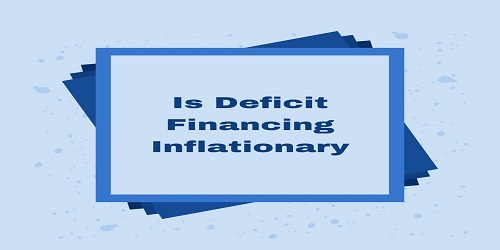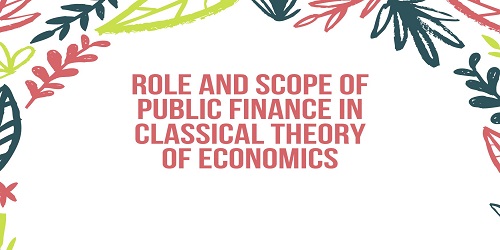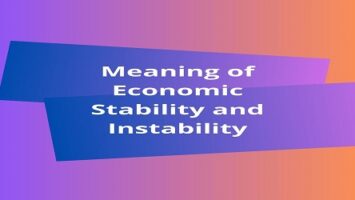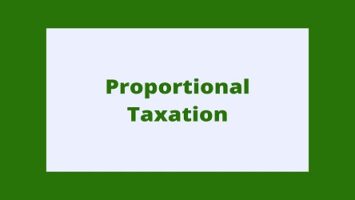Table of Contents
Is Deficit Financing Inflationary:
It should now be analyzed whether deficit financing is pro-inflationary or not. It can be examined in two ways. In the first place, it is to be seen how deficit financing is pro-inflationary. In the second place, it is to be seen under what conditions deficit financing is not inflationary. Let us now examine these two aspects of this problem.
Deficit Financing is Pro-inflationary:
The effects of financing a budget deficit are seen mainly on money supply, incomes, and prices. The direct and immediate result of deficit financing, for whatever purpose it is resorted to, is an increase in the total money supply to the public. The actual expansion in monetary circulation which may result from a given amount of deficit financing will, however, depend on the behavior of various factors influencing money supply, such as the credit policy of the Central Bank, the credit and public debt policy of commercial banks, the State of the balance of payments and the activation of latent inflation, if any. Thus, increased money supply due to deficit financing may lead to different results depending upon the environment in which such a policy is pursued.
However, deficit financing is considered an inflationary method of financing investment expenditure. Since the newly created money is spent for the creation of capital goods, capital formation is a time-consuming process. During the period of capital formation purchasing power in the hand of the people increases, but the supply of consumer goods does not expand correspondingly. Hence, prices of these goods tend to rise, and if this trend is kept unchecked, inflationary pressure may spread over to other sectors of the economy.
Besides, capital accumulation through deficit financing may also generate inflation, because in under-developed economies the propensity to consume is high, there are many market imperfections, there is little excess capacity in plant and equipment, and the elasticities of food supply are low. Hence with the increase in money supply, the increase in consumer goods does not take place correspondingly, and, therefore, the prices of these goods tend to rise.
Again, when the aggregate outlay in an economy is increased through deficit financing, it leads to a rise in the money incomes of the people. Government expenditure goes into the hands of the people as incomes, in the form of wages, salaries, interest payments, rent, and costs of projects, etc.
A part of these incomes goes to banking systems or commercial banks, this increases the cash resources of the commercial banks and on the basis of which they create credit more than the cash resources they receive from the public. It again adds to the community’s spending capacity and increases the prices of consumer goods.
It has also been argued that less developed or developing countries are more pro to inflation than those developed countries for several reasons. In developed countries, inflation is mainly cost price push type, whereas in a backward country, although there is also some cost pressure, the cause of inflation is monetary expansion, which may be a stronger and more pervasive force. In advanced countries, a considerable part of an investment may be a financial outlay of retained profits, whereas, in underdeveloped countries, investment is more likely to be financed by credit creation. In developed countries, there are also more entrepreneurs preferring long-term investments in productive enterprises to speculative short-term ventures. Further, it is maintained that the capacity of the governments in poor countries to control inflation is limited. The application of fiscal and monetary policies may not be sufficiently effective, while at the same time, they can not resist increasing demand for more government services, particularly of a social welfare nature. Thus, an increase in the general price level may hinder development in these economies since it may force the government to make provisions for welfare services and to provide relief to its employees in the shape of dearness allowance, etc., on one hand, and, to curtail productive expenditure of the other. It obviously hinders the economic development of a country.
Deficit Financing may not be Inflationary:
Deficit financing may not always be inflationary as it is commonly supposed. There are certain conditions under which deficit financing may not lead to inflation. For instance, when the public sector assumes increasing importance in the economic activities of a country, some deficit financing is essential for providing the appropriate money supply to finance the growing output at stable prices. Again when in the course of the development process of an under-developed economy, various sectors are increasingly monetized, the increased money supply through deficit financing may not lead to a rise in prices. Moreover, the absence of deficit financing under such circumstances may lead to a decline in prices, affecting adversely output and employment. Besides, in an economy, where output is increasing either because of vigorous efforts in certain fields of productivity of the workers, or where hitherto unutilized or underutilized resources are coming under use, deficit financing may be inflationary.
Moreover, the increasing level of economic activity as evidenced by rising production, employment, and real income will require a larger money supply, as people will demand additional currency for keeping in the form of ready cash necessary for current purposes. Deficit financing which satisfies such preference for liquidity is quite essential for maintaining stability. Thus, Prof. W. A. Lewis said that “In every economy where economic growth is occurring, people need to hold more money, and so the government can create more money without causing prices to rise.”
Conclusion:
Thus, it can safely be concluded that deficit financing may be of more constructive use in backward economies than is commonly supposed, when it is used to secure appropriate money supply and to direct real resources to the government for its investment. It is clearly essential to the success of planned economic development.
It may also be contended that even if deficit financing tends to be inflationary it need not be condemned in all circumstances. Thus, if deficit financing results in a mild inflationary situation it may afford incentives to certain sectors of the economy to draw into using unutilized resources, then that degree of inflation may be regarded as functional, and, therefore, not necessarily harmful to the development, as the inflation of ‘spiral’ nature could be. Thus, it can be said that a functional rise in prices is harmless.
Moreover, deficit financing is undertaken only intermittently and in small doses for investment which can be completed quickly and which is very productive after completion, will certainly facilitate capital formation without inflation. Thus, deficit financing is undertaken for the purpose of entirely useful capital goods, even if it leads to mild inflation at certain stages, it is ultimately self-destructive. If deficit financing is certainly used in producing consumer essentials through short-gestation period projects, the commodity side may be larger than its money counterpart, then it may result in disinflation. Hence, it is the wrong application of this tool itself. Even the best type of medicine may prove lethal if it is wrongly applied and one does not blame the medicine for that. Hence, we reach the Constitution that, deficit financing need not necessarily be inflationary and harmful.









Comments (No)